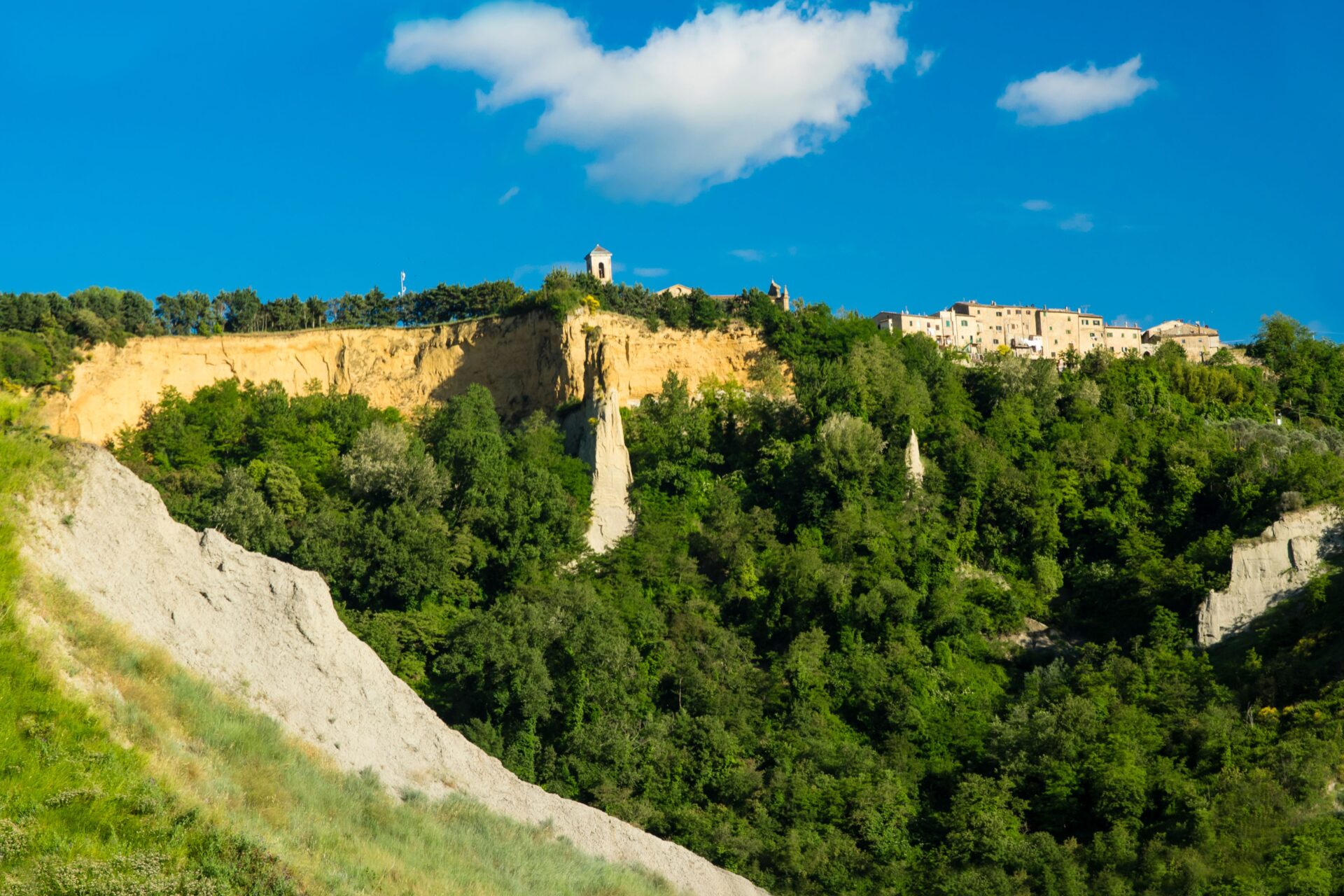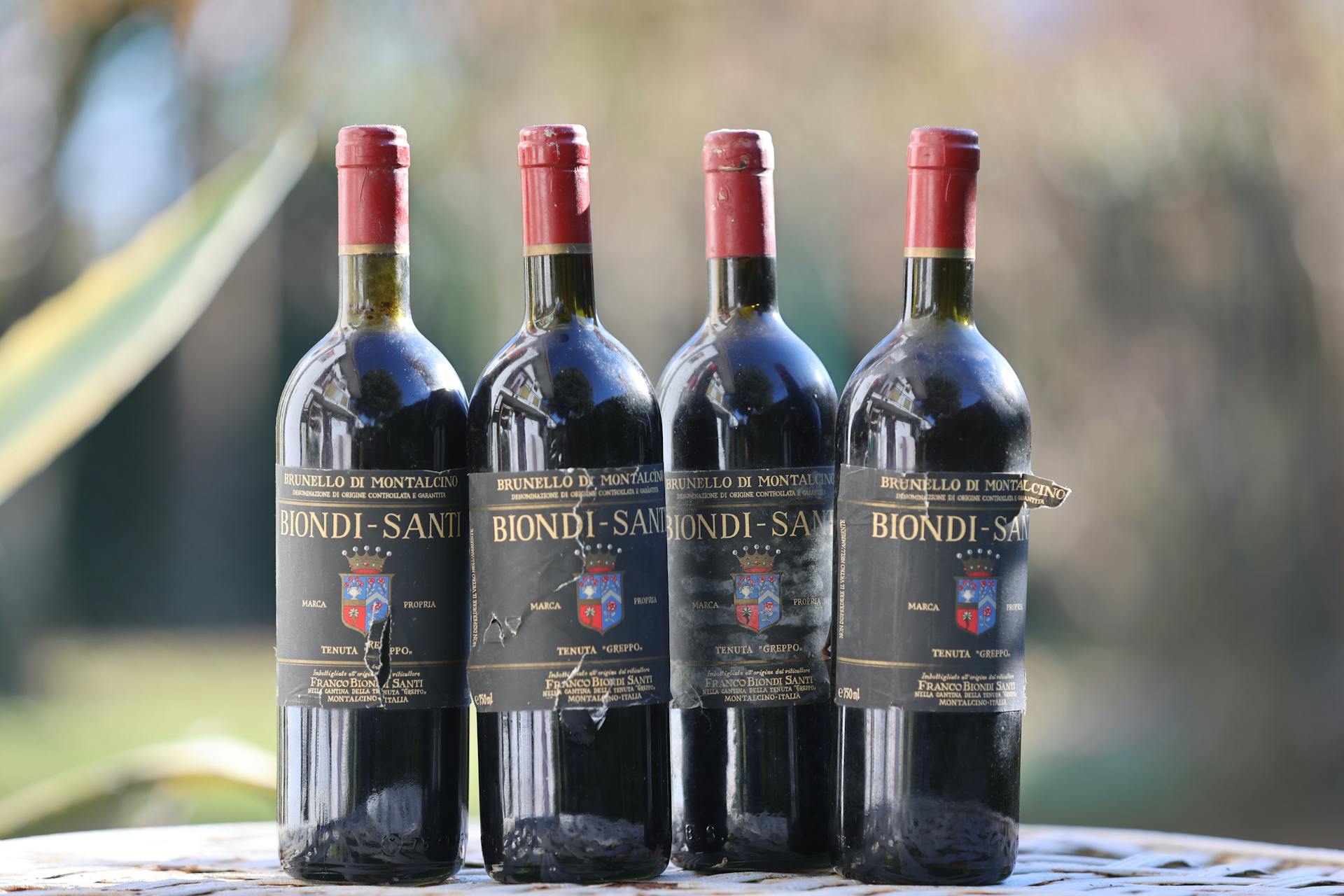Walking through the ancient streets of Volterra, I’m struck by how deeply the Etruscan past is woven into the town’s identity. This hilltop gem in Tuscany has preserved an artistic tradition that spans over 2,000 years – the delicate craft of alabaster carving.
What makes Volterra truly special is how the skilled hands of today’s artisans connect directly to those of their Etruscan ancestors, transforming soft white stone into works of art just as they did millennia ago.

The workshops scattered throughout Volterra’s medieval center tell a story of artistic continuity few places on earth can claim. I peek through doorways to see craftsmen hunched over their workbenches, using tools and techniques remarkably similar to those of ancient times. The alabaster itself comes from the surrounding hills, mined in the same areas where Etruscans once gathered this prized material.
My favorite part of exploring Volterra is watching how these artisans turn rough blocks of alabaster into delicate sculptures, decorative items, and practical works of art. Each piece captures both the physical heritage of Tuscany’s landscape and the cultural legacy of its earliest civilization. The tradition has survived countless historical shifts – from Etruscan to Roman times, through the Renaissance, and into our modern world.
The Ancient Roots of Volterra
Volterra’s history runs deep, with layers of civilization that date back to the mysterious Etruscans who shaped this hilltop city’s identity long before Romans arrived.
Etruscan Legacy and Its Cities
Walking through Volterra, I can feel the Etruscan presence everywhere. This powerful city-state, known as Veláthri in the Etruscan language, was one of the most important centers in ancient Etruria. The massive stone Etruscan Walls still partially encircle the city, with some sections dating back to the 4th century BCE.
What makes Volterra special is how it preserves its Etruscan roots while evolving through time. The city’s strategic position atop a hill offered natural protection and panoramic views of the surrounding valleys.
The Porta all’Arco, an ancient gate with three weathered Etruscan heads still watching over visitors, remains one of my favorite spots. It’s incredible to touch stones that hands shaped over 2,500 years ago!
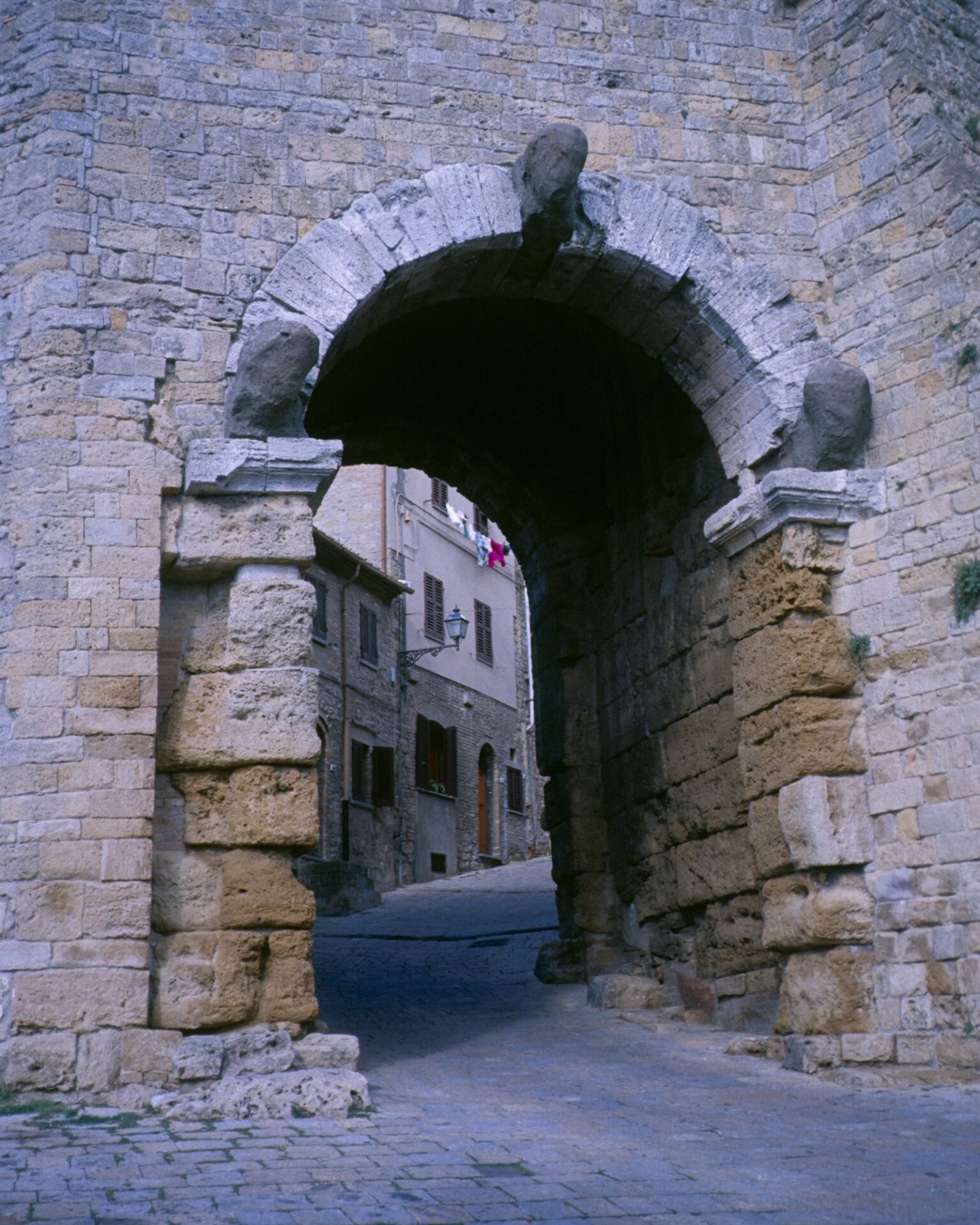
Unveiling the Secrets of the Etruscan Museum
The Guarnacci Etruscan Museum holds treasures that tell stories of this fascinating civilization. I spent hours exploring its collection of over 600 funeral urns, many carved from the local alabaster that would become Volterra’s signature craft.
The museum’s star attraction, the “Shadow of the Evening” (Ombra della Sera), is a bronze figurine with an elongated form that casts a long shadow like a person at sunset. Its modern-looking design seems centuries ahead of its time.
Beyond artifacts, the museum reveals how Etruscans lived, worshipped, and viewed the afterlife. Their artistic skills and cultural sophistication challenge the notion that ancient peoples were primitive.
Visiting here transformed my understanding of pre-Roman Italy and showed me the direct link between these ancient people and Volterra’s famous alabaster tradition that continues today.
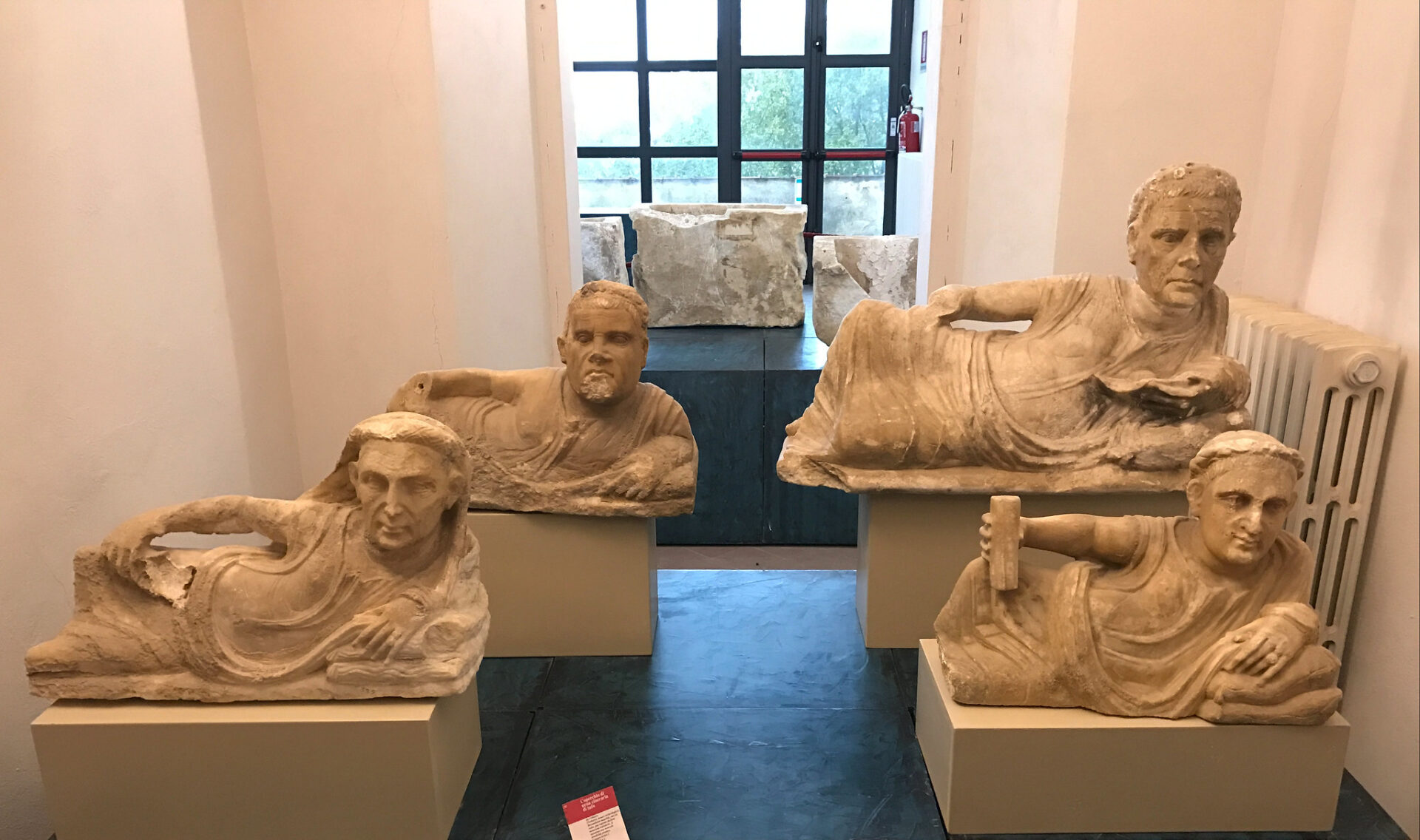
Image Source: Flickr
Alabaster: The Gleaming Stone of Volterra
Volterra’s identity is deeply intertwined with alabaster, a luminous white stone that has been the city’s treasure for over two millennia. This unique material captures light in its smooth, translucent surface, creating an otherworldly glow that has fascinated artisans since Etruscan times.
The Art of Alabaster Carving
I discovered that alabaster carving in Volterra dates back to the ancient Etruscans, who used this soft stone to create cinerary urns for their ancestors’ ashes. Walking through Volterra’s narrow streets, you can still hear the gentle scraping sounds of artisans at work, continuing this ancient tradition.
The stone’s unique properties make it perfect for detailed carvings. It’s soft enough to work with precision tools yet durable enough to last centuries. When I visited a workshop, the craftsman showed me how light passes through thin sections of alabaster, creating a warm, ethereal glow.
Today’s artisans use techniques passed down through generations. They transform raw blocks mined from the surrounding hillsides into everything from delicate figurines to elaborate lamps that showcase the stone’s translucent quality.
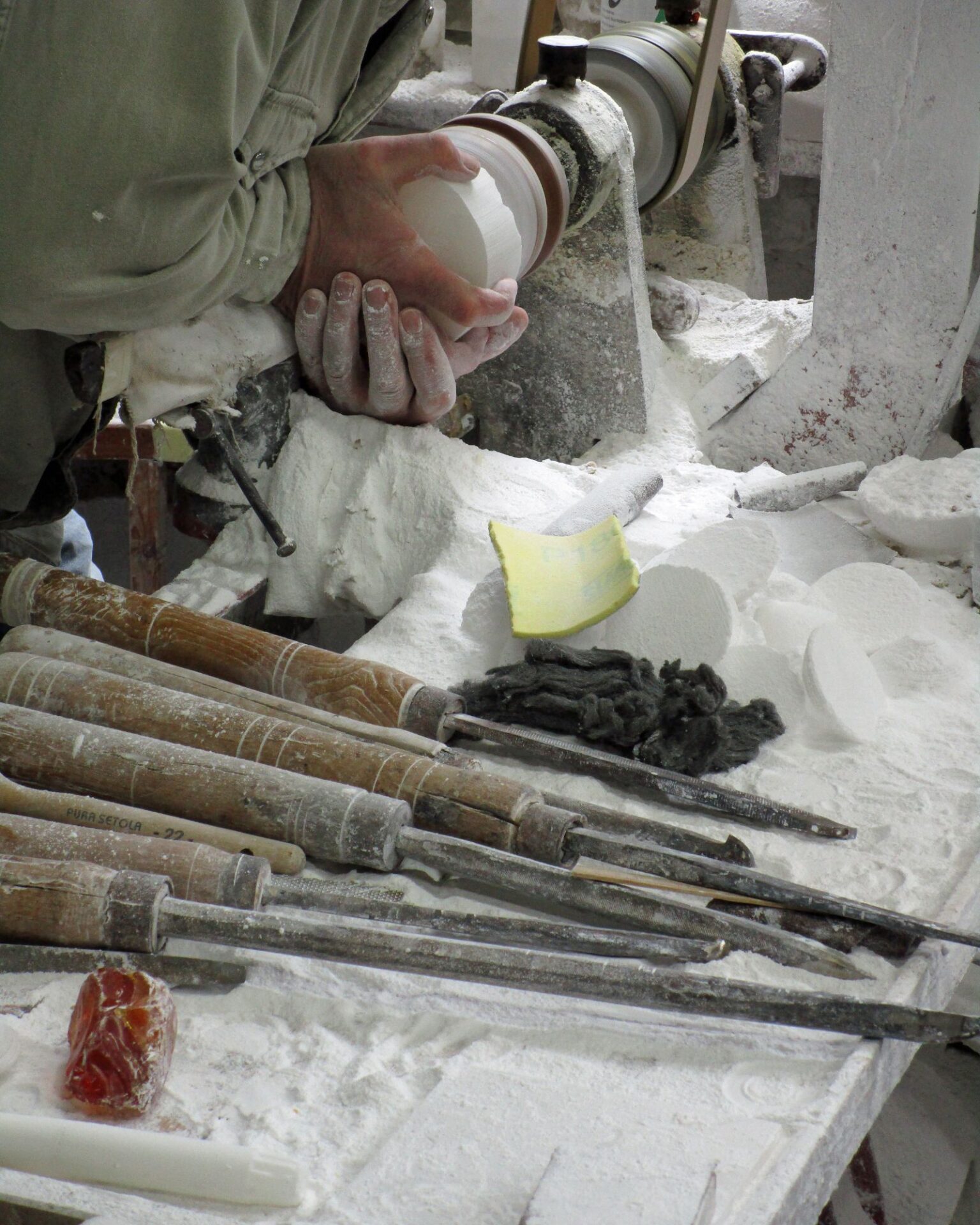
Finding Authentic Alabaster Creations
My best tip for finding genuine alabaster in Volterra is to visit the workshops directly. Many artisans welcome visitors to watch them work and explain the difference between authentic pieces and imitations.
Look for the characteristic translucence when shopping – hold pieces up to the light and you should see a warm glow through thinner sections. Authentic alabaster has subtle veining and a cool, smooth touch that’s unmistakable once you’ve felt it.
The best shops are located in Volterra’s historic center. I recommend visiting multiple workshops to compare styles and prices. Many artists sign their work, and some offer customized pieces if you’re looking for something special.
Prices reflect the time-intensive craftsmanship, with smaller items starting around €20 and museum-quality pieces reaching hundreds or even thousands of euros.
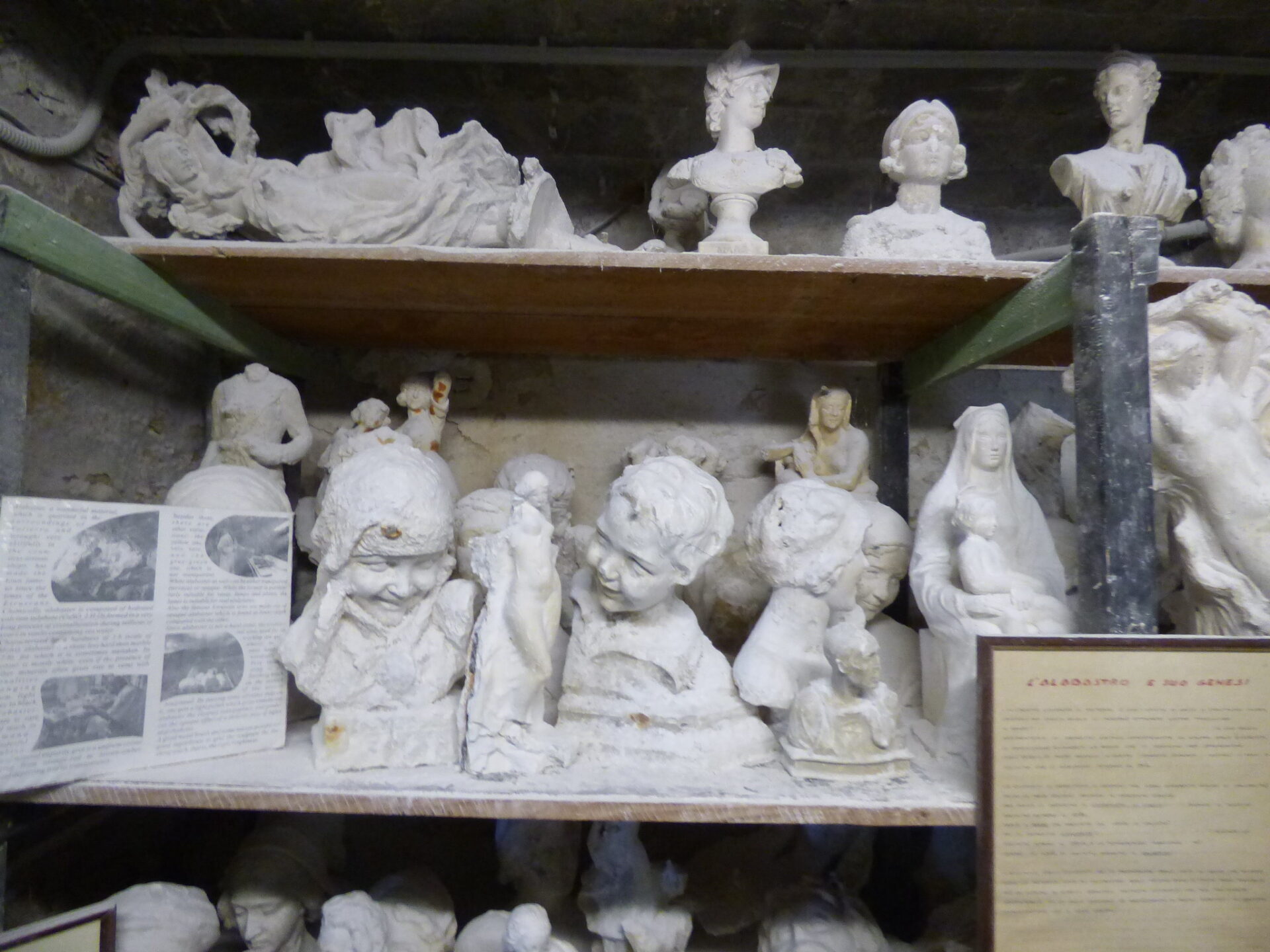
Image Source: Flickr
A Stroll Through Time: Volterra’s Historical Landscape
Walking through Volterra feels like stepping into an open-air museum where every stone tells a story spanning over 3,000 years. The ancient Etruscan walls still define parts of the city, while Roman and medieval influences create a fascinating historical tapestry.
The Roman Theatre and Medici Fortress
The Roman Theatre of Volterra took my breath away when I first saw it. Built in the 1st century BC, it’s one of the best-preserved ancient theaters in Italy. I spent an entire morning exploring its semicircular seating area that once held up to 2,000 spectators.
Just a short walk away stands the imposing Medici Fortress. Constructed in the 1470s, this massive structure was meant to symbolize Florence’s control over Volterra. The fortress consists of two distinct parts: the Old Fortress and the New Fortress.
When visiting, I recommend arriving early to avoid crowds. The views from the fortress walls are simply spectacular – you can see across the rolling Tuscan hills for miles!
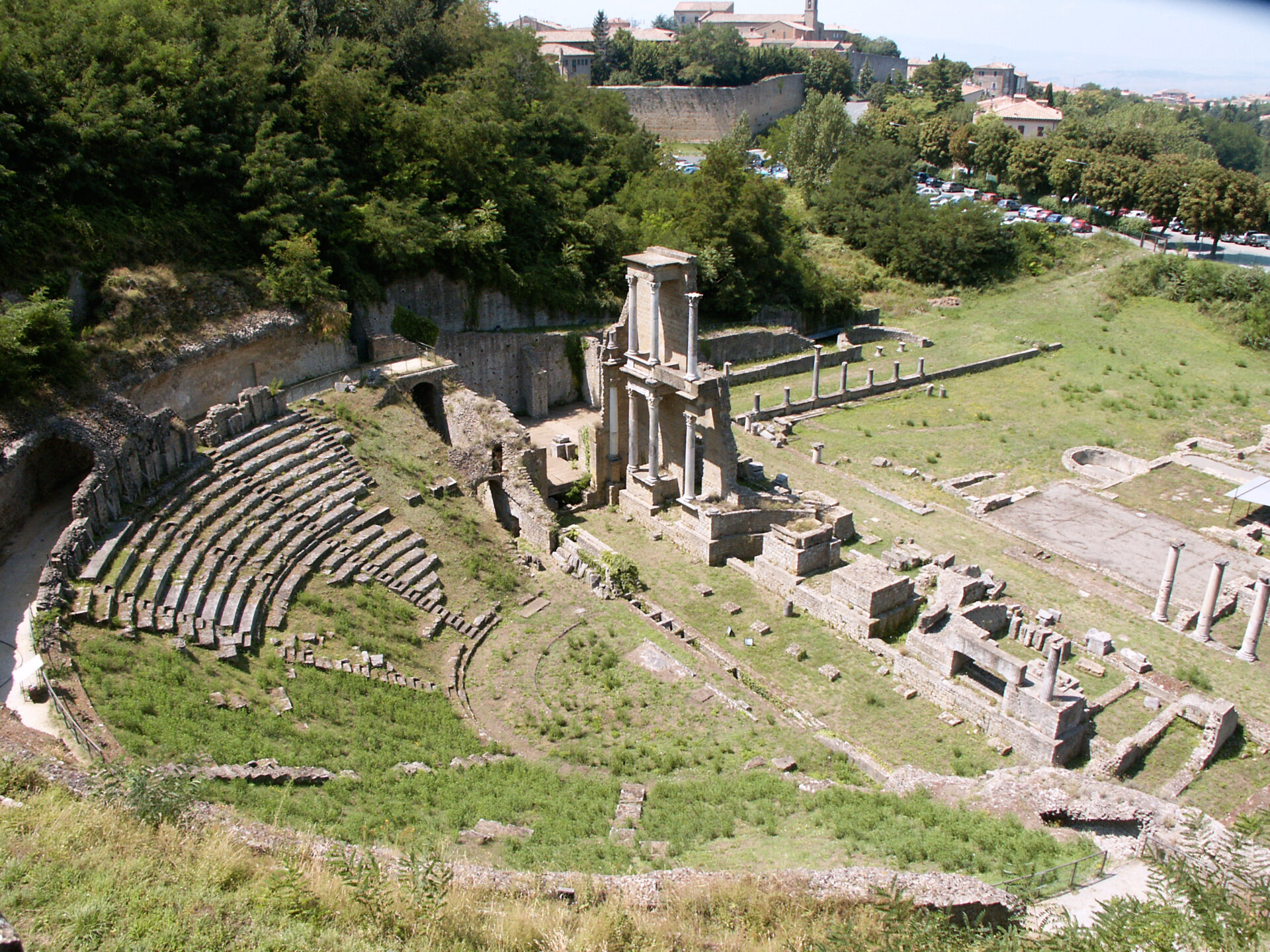
Image Source: Wikimedia Commons
Medieval Towns and Cobblestone Streets
Volterra’s medieval heart captivated me with its narrow cobblestone streets and well-preserved buildings from the 13th century. Palazzo dei Priori, Italy’s oldest town hall, dominates the main square with its distinctive tower and crenellated top.
I love getting lost in the winding alleys where artisan workshops still create traditional alabaster crafts. These streets haven’t changed much since the Middle Ages – many buildings still feature their original stone facades and wooden doors.
The Piazza San Giovanni forms the religious center of town, home to both the Cathedral and Baptistery. I found the quiet evenings magical here, with golden light washing over the ancient stones as locals gathered for their evening passeggiata.
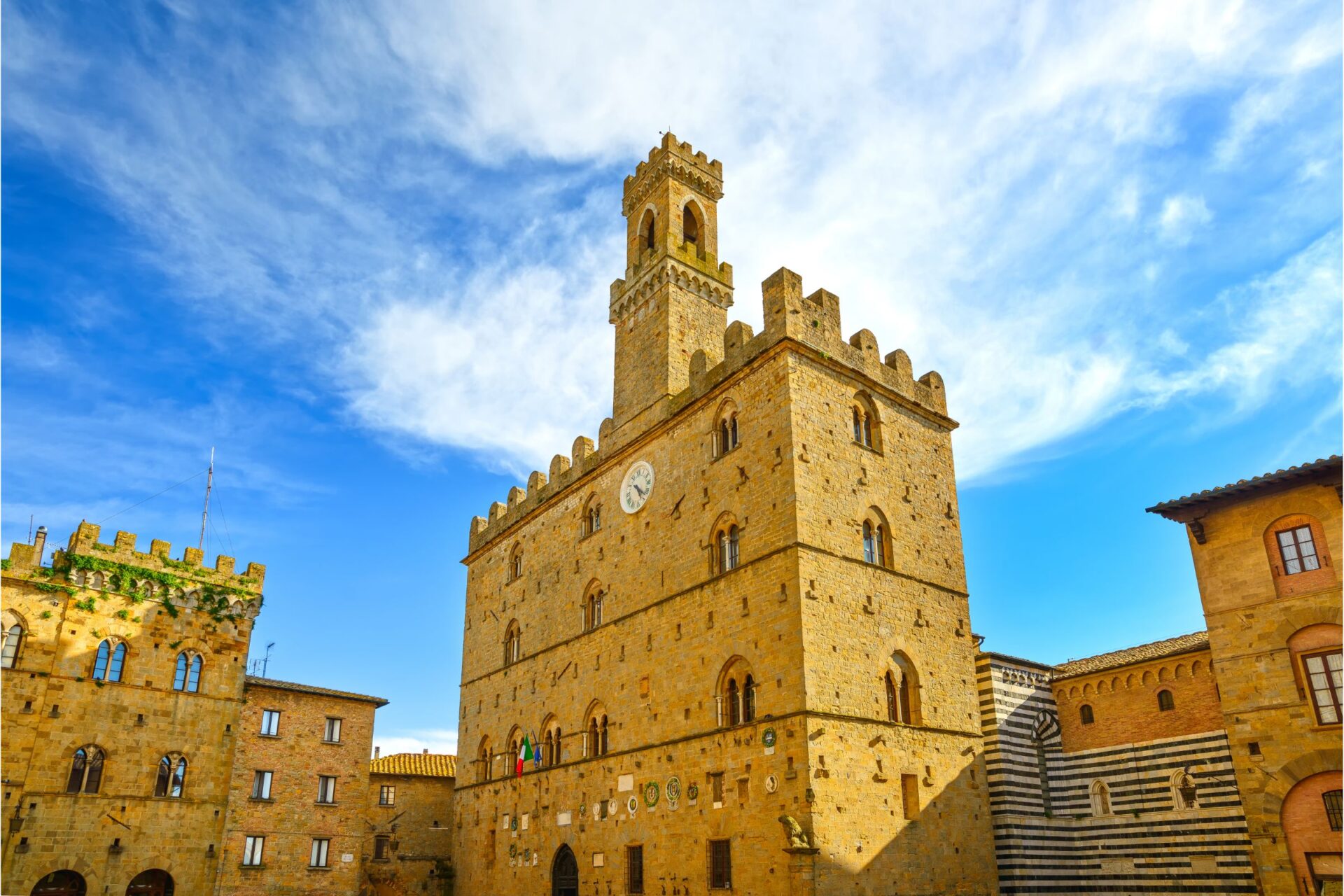
Savoring Tuscany: Culinary Delights and Wine
Tuscany’s flavors captivate visitors as much as its landscapes, with Volterra offering an exceptional gateway to this gastronomic paradise.
Local Cuisine and Trattorias
Walking through Volterra’s medieval streets, I discovered tiny trattorias serving authentic Tuscan cuisine that tells stories of tradition and simplicity. The local restaurants pride themselves on farm-to-table ingredients – many sourced within miles of where you’re sitting.
I recommend trying pappardelle al cinghiale (wide pasta with wild boar sauce) or the region’s famous bistecca alla fiorentina. These hearty dishes pair perfectly with the robust local wines.
For an unforgettable experience, I joined a cooking class where a local nonna taught us to make perfect pici pasta by hand. Her decades of culinary wisdom transformed simple ingredients into extraordinary flavors.
The trattorias around Piazza dei Priori offer not just meals but authentic Tuscan hospitality. Many serve house olive oils pressed from local groves that you can sample before your meal.
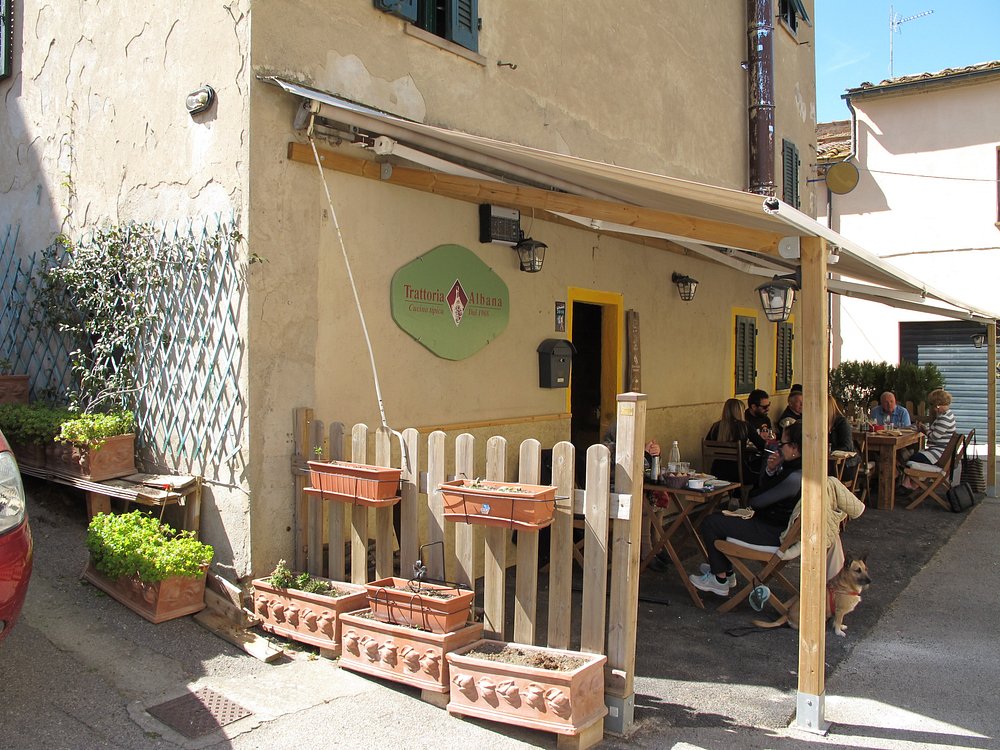
Image Source: Tripadvisor
Brunello di Montalcino: A Wine Lover’s Dream
My wine journey through this region revealed why Tuscany holds such reverence among wine enthusiasts worldwide. Brunello di Montalcino stands as the crown jewel – a rich, complex red that perfectly captures the essence of Sangiovese grapes.
I visited several family-owned vineyards where sommeliers explained how the unique microclimate and ancient soils give these wines their distinctive character. The aging process in oak barrels creates notes of cherry, leather, and spice that linger beautifully.
Wine tastings here often include local cheeses and cured meats that complement different vintages. Many vineyards also produce exceptional olive oil, creating perfect pairing opportunities.
For the ultimate experience, I joined a truffle hunt followed by a wine pairing dinner. The earthy flavors of fresh truffles alongside aged Brunello created flavor combinations I still dream about months later.
Experiential Travel: Immersive Activities in Volterra
Visiting Volterra offers more than just sightseeing—it’s about diving into authentic experiences that connect you with the town’s 3,000-year heritage. I’ve found that the most memorable moments come from hands-on activities and explorations beyond the typical tourist path.
Crafting an Itinerary with a Private Guide and Driver
I highly recommend booking a private guide for at least one day in Volterra. My guide Marco transformed my understanding of the Etruscan ruins with stories I’d never find in guidebooks. He balanced our day perfectly between the famous Etruscan Museum and hidden corners tourists often miss.
Having a driver alongside your guide lets you expand your exploration to the surrounding countryside. We stopped at panoramic viewpoints where I photographed the dramatic Tuscan landscape with Volterra perched on its hilltop. The driver knew exactly when to visit the alabaster workshops to see artisans at work without the crowds.
Tip: Request guides who specialize in Etruscan history for a deeper experience.
Off the Beaten Path: Volterra’s Hidden Gems
The Vallebona forest trail just outside Volterra became an unexpected highlight of my trip. This ancient pathway offers a peaceful nature escape. You can also see occasional views of the town’s medieval walls.
I discovered a small, family-run alabaster workshop down a narrow alley. The owner Paolo invited me to try carving a simple piece myself. This hands-on experience helped me appreciate the craftsmanship I saw throughout town.
Don’t miss the sunset viewpoint at Balze di Volterra. These dramatic eroded cliffs are slowly consuming parts of the ancient landscape. The evening light makes the golden-hued city seem to glow from within.
The tiny La Rosa vineyard just outside town offers impromptu tastings of wines made from grapes grown in Etruscan-era terraced fields.
